A Compilation of Ireland’s Finest Castles and Manor Houses (Alphabetical Photos)
Embarking on a journey to Ireland holds tremendous appeal due to various captivating castles and manor houses scattered throughout the country. Ireland boasts an abundance of awe-inspiring castles and grand manor houses, with some ruins of ancient castles adding a touch of historical charm.
Discover below a handpicked selection of the most exquisite manor houses and castles in Ireland. Rather than focusing on ruins, this collection showcases structures that are still in use. Some of these majestic sites are privately owned residences, while others have been transformed into luxurious accommodations. After all, maintaining a massive castle in this day and age requires substantial resources and perhaps even an enduring family fortune. Take, for instance, the magnificent Ashford Castle, which, as depicted above and below, is not merely affordable for the average person due to its exorbitant heating expenses, but it undeniably rivals the grandeur and scale of any European castle.
1. Adare Manor
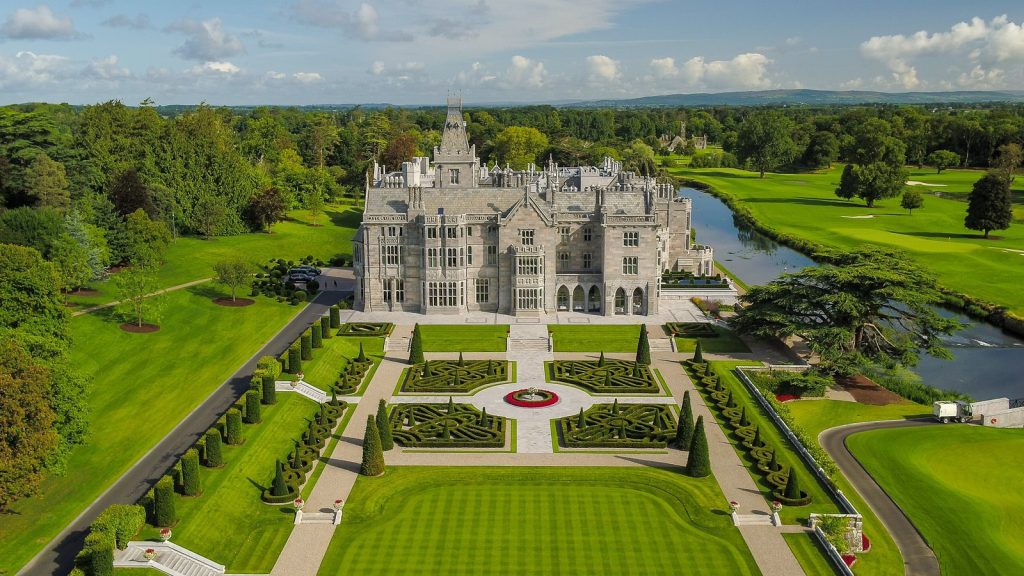
Situated in the village of Adare, the Adare Manor was previously the esteemed seat of the Earl of Dunraven and Mount-Earl. Its construction was completed in 1862 under the supervision of Sir Valentine Quin, the grandfather of the first Earl of Dunraven. Presently, this manor serves as a luxurious hotel that includes a golf course.
Details about Adare Manor:
Location: Adare, Ireland
Erected during: The 19th century
Architect: Sir Valentine Quin
Architectural style: Tudor revival style
Present use: Luxury hotel
Current owner: Privately owned
2. Ashford Castle
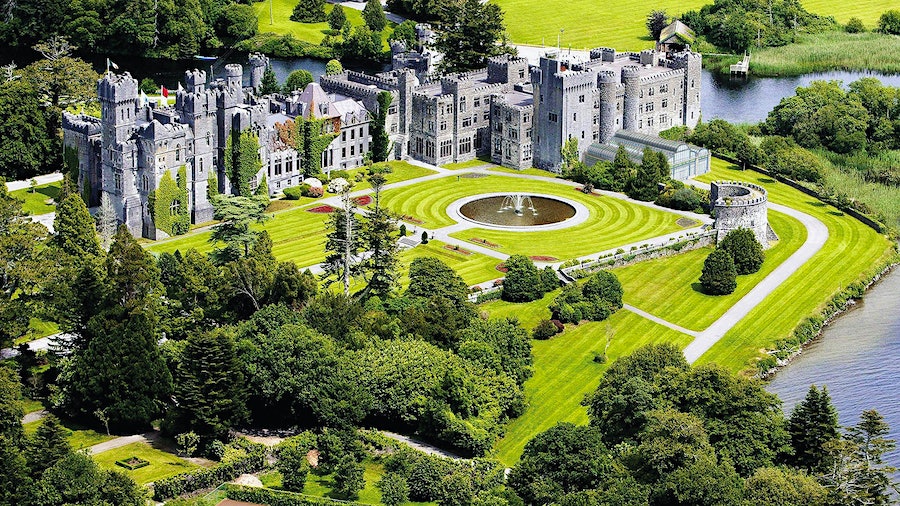
Having expanded over the centuries, Ashford Castle encompasses both medieval and Victorian architectural elements. It occupies the site where the Anglo-Norman House of Burke was established in 1228. In 1852, Sir Benjamin Lee Guinness acquired the estate from the Encumbered Estates’ Court. Subsequent modifications were made by his son, and in 1939, Noel Huggard purchased the property, transforming it into a renowned hotel. Today, Ashford Castle stands as a five-star luxury hotel and holds membership in the prestigious Leading Hotels of the World organization.
Details about Ashford Castle:
Location: Mayo, Ireland
Constructed during: The 13th century
Builder: House of Burke
Architectural style: Victorian style/Neo-gothic style
Present use: Luxury hotel
Current owner: Red Carnation Hotels
3. Ballynahinch Castle

Originally serving as an Irish country house, Ballynahinch Castle has now been converted into a hotel. It was previously the residence of Richard Martin, the founder of the Society for the Prevention of Cruelty to Animals and a Member of Parliament for County Galway. Built in 1754, the castle underwent modifications over the years.
Details about Ballynahinch Castle:
Location: Recess, Ireland
Constructed in: 1754
Builder: Unknown
Architectural style: Baroque architecture
Present use: Hotel
Current owner: Privately owned
4. Belfast Castle
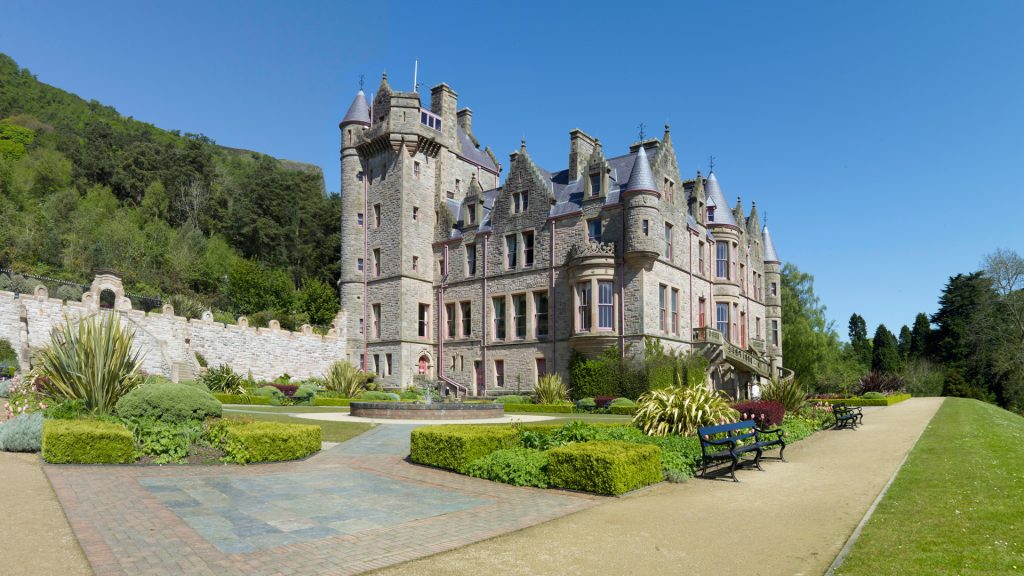
Belfast Castle, situated in Belfast, Northern Ireland, has an intriguing history. The Normans constructed the original Belfast Castle during the 12th century. Sir Arthur Chichester, the 1st Baron Chichester, later built a second castle, which he made his official residence. Unfortunately, this castle, along with the original building, was ravaged by fire. Rather than rebuilding the property, the Chichester family opted to construct an entirely new residence. The current Belfast Castle was erected between 1811 and 1870 under the guidance of George Chichester, the 3rd Marquess of Donegall. The architectural firm Lanyon, Lynn and Lanyon, headed by architect Charles Lanyon and his son, oversaw the project. This Scottish baronial style castle was completed during the reign of Anthony Ashley-Cooper, the 8th Earl of Shaftesbury. Eventually, Anthony Ashley-Cooper, the 9th Earl of Shaftesbury, gifted the castle to the City of Belfast, and it was opened to the public in 1988.
Details about Belfast Castle:
Location: Belfast, Ireland
Constructed between: 1811 and 1870
Builder: George Chichester, 3rd Marquess of Donegall
Architectural style: Scottish baronial style
Present use: Open to the public
Current owner: City of Belfast
5. Belvedere Estate

The Belvedere House and Gardens, built in 1740, initially served as a hunting lodge for Robert Rochfort, the 1st Earl of Belvedere. The renowned architect Richard Cassels, one of Ireland’s foremost Palladian architects, was entrusted with its construction. Interestingly, the house eventually became Robert’s primary residence after he discovered his wife’s affair with his brother, Arthur. In response, he imprisoned both of them but could no longer bear to dwell in a place so saturated with memories of his estranged wife. As a result, he relocated from his original residence and went on to construct the Jealous Wall, Ireland’s largest folly, to obscure the view of his brother’s nearby house.
Details about the Belvedere Estate:
Location: Belvidere, Ireland
Constructed in: 1740
Builder: Robert Rochfort, 1st Earl of Belvedere
Architectural style: Palladian architecture
Present use: Tourist attraction/Events venue
Current owner: Mullingar Municipal District
6. Birr Castle

Nestled in the town of Birr, Birr Castle stands as a grand residence that serves as the private home of the 7th Earl of Rosse. It was erected on the site of a former castle from the 12th century. The construction of Birr Castle was commissioned in 1620 by Sir Laurence Parsons. In the early 19th century, the castle underwent a transformation, adopting a Gothic architectural style.
Details about Birr Castle:
Location: Birr, Ireland
Constructed in: 1620
Builder: Sir Laurence Parsons
Architectural style: Gothic style
Present use: Private residence of the 7th Earl of Rosse
Current owner: Brendan Parsons, 7th Earl of Rosse
7. Blackrock Castle
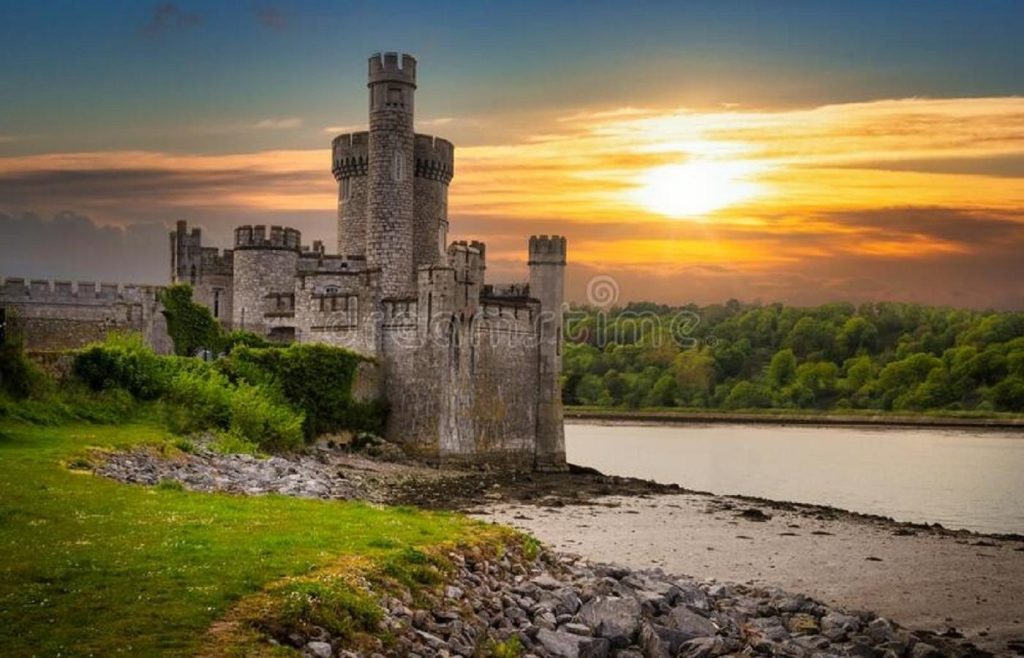
Blackrock Castle, a castellated fortification, was constructed at the behest of Queen Elizabeth I. Responding to the citizens of Cork’s plea to safeguard the area from pirates and invaders, the fortification was established in 1582. After being handed over to the City of Cork, the castle suffered several instances of destruction but was consistently rebuilt. During the 20th century, the castle transitioned into private ownership and served various purposes, including a private residence, offices, a rowing club headquarters, and a restaurant. Eventually, it was reacquired by Cork City Council and transformed into a museum open to the public.
Details about Blackrock Castle:
Location: Cork, Ireland
Constructed in: 1582
Builder: Queen Elizabeth I
Architectural style: Medieval architecture
Present use: Museum/Open to the public
Current owner: Cork City Council
8. Blarney House
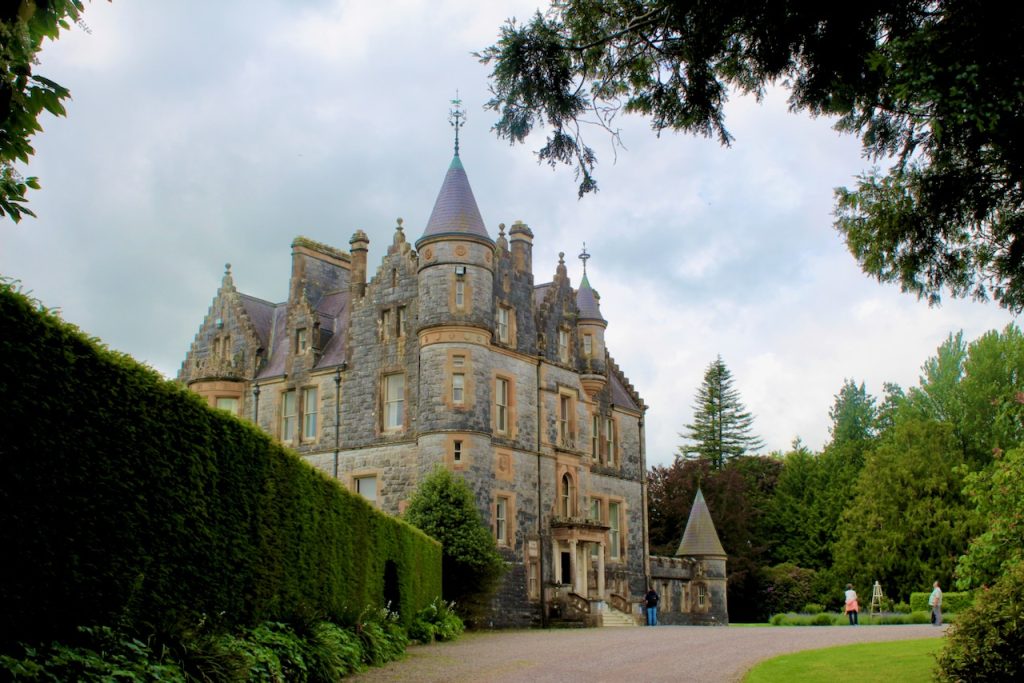
Situated in Blarney, Blarney Castle emerged on the exact spot where a timber house was constructed in the 10th century. This timber house was later replaced by a stone fort in 1210, only to be destroyed in 1446. The current Blarney Castle, built by the Lord of Muscry, Cormac Laidir MacCarthy, stands as a magnificent medieval stronghold. Visitors and tourists can explore its grounds, which are under the control of the Colthurst family.
Details about Blarney Castle:
Location: Blarney, Ireland
Constructed in: 1446
Builder: Lord of Muscry, Cormac Laidir MacCarthy
Architectural style: Medieval architecture/Gothic style
Present use: Open to visitors/Tourist attraction
Current owner: Colthurst family
9. Brownlow House
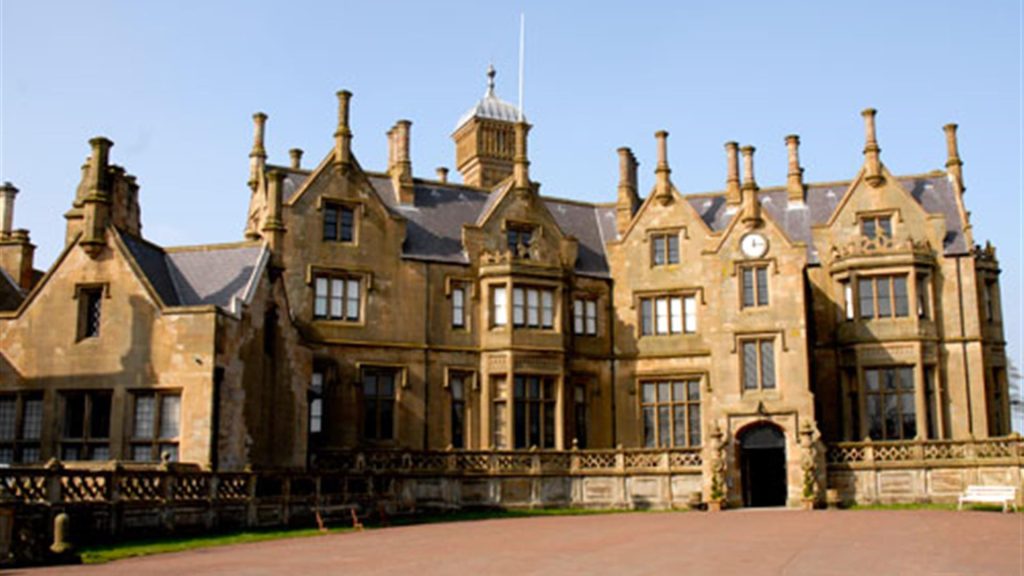
Commissioned by Charles Brownlow, the 1st Baron Lurgan, Brownlow House, also known as Brownlow Castle or Lurgan Castle, was designed by Scottish architect William Henry Playfair. Originally intended as a family residence, the castle now belongs to the Lurgan Loyal Orange District Lodge, having been purchased from the Lurgan Real Property Company Ltd. After serving as a military headquarters during both World Wars, Brownlow Castle presently functions as a museum.
Details about Brownlow House:
Location: Lurgan, Ireland
Constructed in: 1883
Builder: Charles Brownlow, 1st Baron Lurgan
Architectural style: Renaissance style
Present use: Museum/Open to the public
Current owner: Lurgan Loyal Orange District Lodge
10. Butler House

Nestled in Kilkenny, Butler House is an 18th-century Georgian Dower house that currently operates as a four-star hotel and conference center. It was completed in 1786, serving as the Dower house for Kilkenny Castle. Walter Butler, the 16th Earl of Ormonde, commissioned the construction of Butler House for his wife to reside in while their son, John Butler, the 17th Earl of Ormonde, inherited the title. Presently, the Kilkenny Civic Trust owns and manages Butler House.
Details about Butler House:
Location: Kilkenny, Ireland
Constructed in: 1786
Builder: Walter Butler, 16th Earl of Ormonde
Architectural style: –
Present use: 4-Star Hotel/Conference center
Current owner: Kilkenny Civic Trust
11. Kilkenny Castle
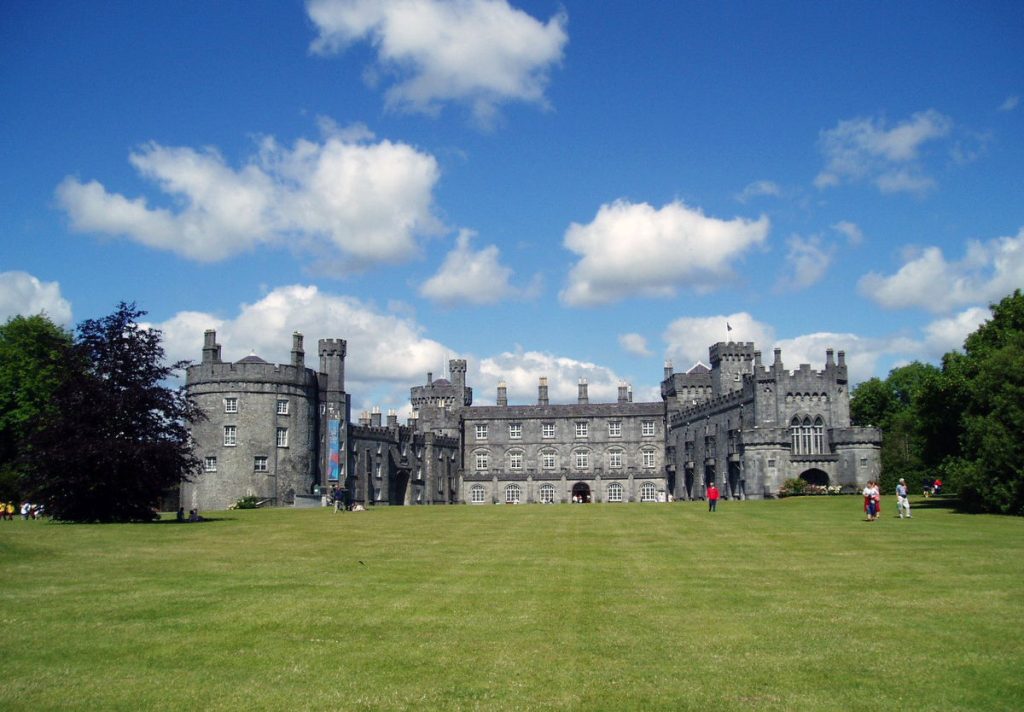
Also known as the Castle of Butlers, Kilkenny Castle was constructed between 1195 and 1213, soon after the Norman conquest of Ireland. In 1967, the property was transferred to the people of Kilkenny and subsequently opened to the public. The Office of Public Works has undertaken its maintenance.
Details about Kilkenny Castle:
Location: Kilkenny, Ireland
Constructed between: 1195 and 1213
Builder: Unknown
Architectural style: Victorian architecture
Present use: Open to the public
Current owner: Office of Public Works
12. Castle Saunderson

Castle Saunderson, previously known as Breffni Castle, was the ancestral seat of the Saunderson family. It was inhabited by the O’Reillys of Breffni from the 14th century until it was inherited by Robert Sanderson in 1676. Though the castle suffered destruction and subsequent renovations, it eventually fell into ruins. The estate was later sold to a private owner after Captain Alexander “Sandy” Saunderson, the final Saunderson owner, decided to relinquish the property. Castle Saunderson is now a Scouting Ireland facility.
Details about Castle Saunderson:
Location: Belturbet, Ireland
Constructed in: Unknown
Builder: Unknown
Architectural style: Medieval architecture
Present use: Scouting Ireland facility
Current owner: The Castle Saunderson International Scouting Centre
13. Classiebawn Castle
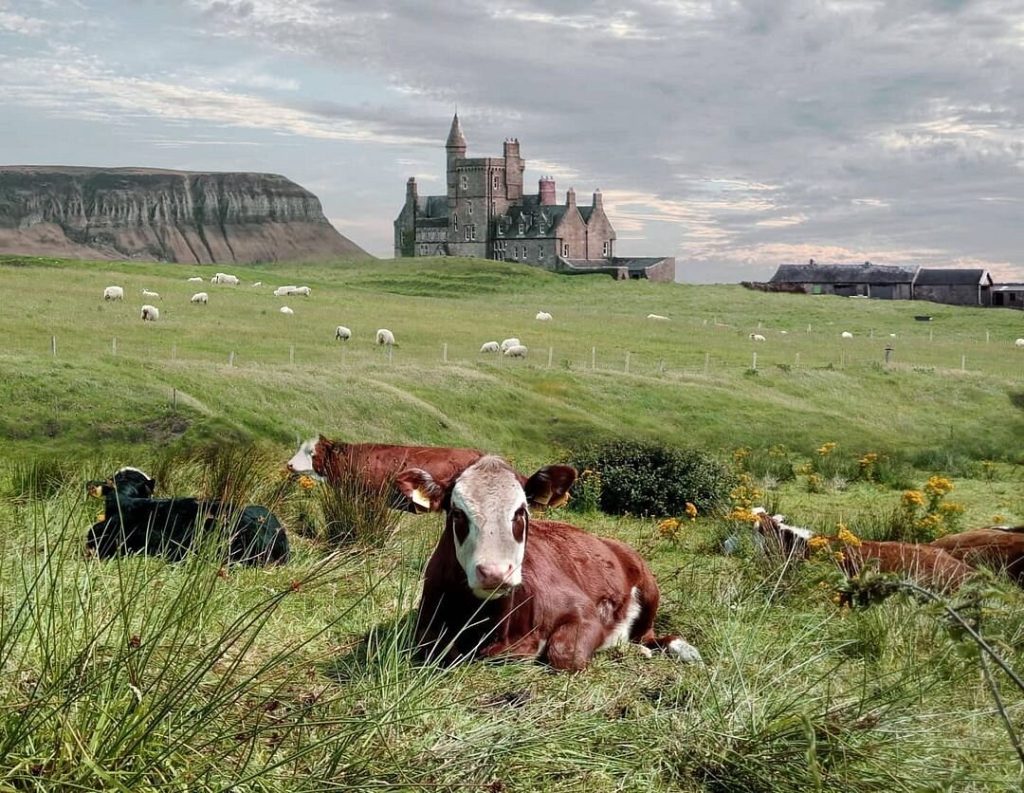
Classiebawn Castle, a country house built for the 3rd Viscount Palmerston, stands as a striking example of Baronial-style architecture. Designed by J. Rawson Carrol, a Dublin-based architect, in the 19th century, it has become a popular tourist attraction in the village of Mullaghmore, owned by a private individual.
Details about Classiebawn Castle:
Location: Belturbet, Ireland
Constructed in: 19th century
Builder: 3rd Viscount Palmerston
Architectural style: Baronial style
Present use: Tourist attraction
Current owner: Private owner
14. Coolmain Castle

Originally erected by the de Courcey family in the early 15th century, Coolmain Castle came under the ownership of the MacCarthy Reaghs, the Princes of Desmond, in the following century. It was later owned by Roy Disney, who acquired the castle from Hollywood photographer Bob Willoughby. After Roy Disney’s passing, the castle remained within the Disney family.
Details about Coolmain Castle:
Location: Coolmain, Ireland
Constructed in: 15th century
Builder: de Courcey family
Architectural style: –
Present use: Private property
Current owner: Disney family
15. Donegal Castle

Located in Donegal Town, Donegal Castle was constructed in the 15th century by the O’Donnell chieftain. The castle underwent rebuilding in Jacobean style by Sir Basil Brooke in the 16th century after it was intentionally burned to the ground by Hugh O’Donnell, the then-owner, to prevent it from falling into enemy hands. Restoration work in the early 1990s, conducted by the Office of Public Works, brought the castle back to its former glory, and it was opened to the public.
Details about Donegal Castle:
Location: Donegal, Ireland
Constructed in: 15th century
Builder: O’Donnell chieftain
Architectural style: Jacobean style
Present use: Open to the public/Events venue
Current owner: Office of Public Works
16. Doneraile Court Manor House
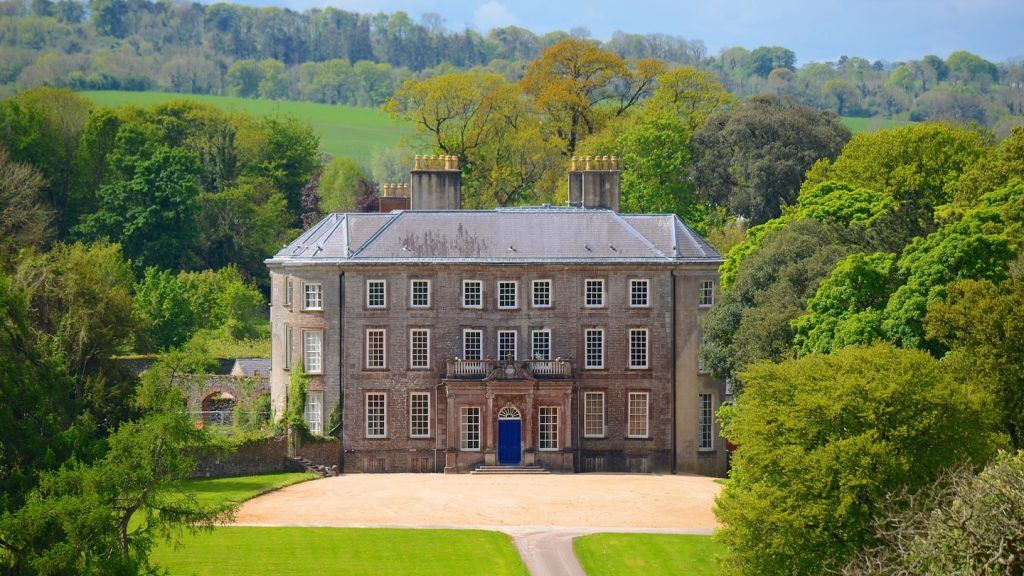
Doneraile Court, a late-17th-century country house, was originally built as Doneraile Castle in the 13th century. However, it was abandoned in the 17th century after sustaining significant damage. A reconstructed building was completed in the late 17th century. Doneraile Court once served as the residence of Lord Castletown, Oliver Wendell Holmes Jr., until his passing. Subsequently, the property was entrusted to the Republic of Ireland, which opened its park to the public free of charge.
Details about Doneraile Court:
Location: Doneraile, Ireland
Constructed in: 17th century
Builder: St Leger family
Architectural style: Renaissance style
Present use: Park, open to the public
Current owner: Republic of Ireland
17. Drishane Castle

Drishane Castle, a MacCarthy tower house and National Monument, is located in County Cork, Ireland. Built in the mid-15th century by Dermot McCarthy, the Lord of Munster, it later fell into the hands of Charles I, who transformed it into a garrison for his supporters. In 1728, the Wallis family acquired the estate and resided there until the 19th century. The castle then changed hands, first to Patrick Stack and later to the Sisters of the Infant Jesus, who established a secondary school for girls within its walls. In 1992, the Duggan family purchased the castle, which now serves as a center for asylum seekers.
Details about Drishane Castle:
Location: Cork, Ireland
Constructed in: 15th century
Builder: Dermot McCarthy, Lord of Munster
Architectural style: Medieval architecture
Present use: National Monument of Ireland
Current owner: Duggan family
18. Dromoland Castle
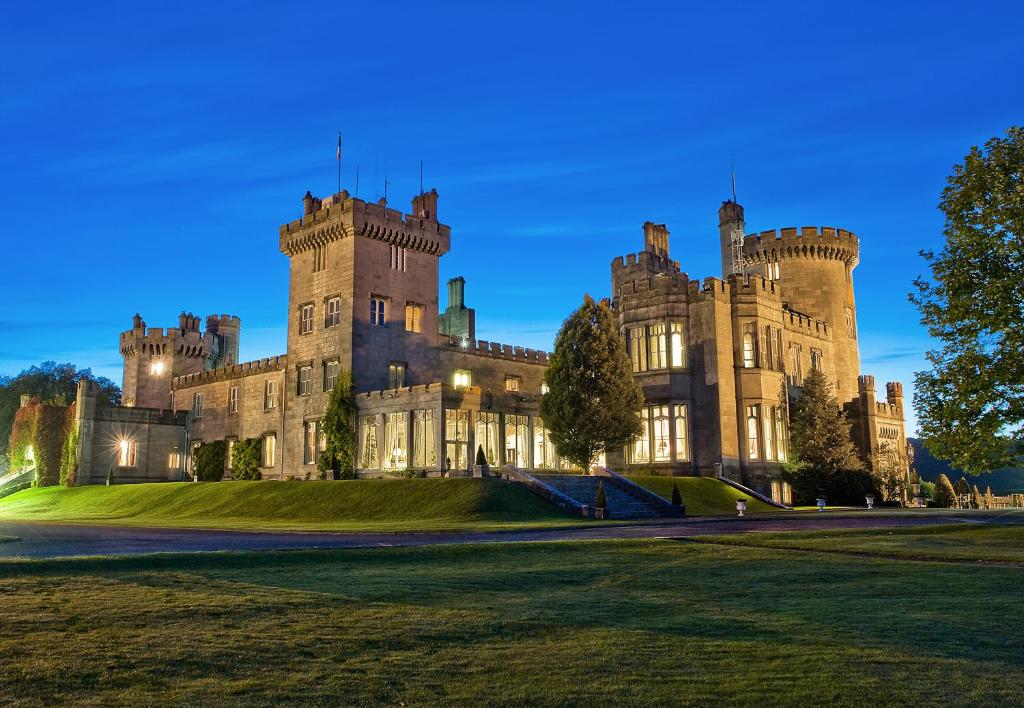
Originally built in the late 15th century, Dromoland Castle now operates as a luxurious five-star hotel with a renowned restaurant. The current structure was constructed in 1835, replacing the original building, which had been damaged in various battles throughout history. Over the centuries, Dromoland Castle has welcomed numerous nobles and members of royalty. Its restaurant, the Earl of Thomond, earned a Michelin star in 1995 under the helm of head chef Jean Baptiste Molinari.
Details about Dromoland Castle:
Location: Dromoland, Ireland
Constructed in: 15th century
Builder: James and George Richard Pain (architects)
Architectural style: Gothic Revival style
Present use: 5-Star Luxury Hotel and Restaurant
Current owner: Private owner
19. Dublin Castle

Dublin Castle, initially commissioned by King John in 1204, was constructed as a defensive fortress during the 13th century. After being damaged by fire and subsequently demolished, it was rebuilt in the 18th century. Throughout history, the castle served as a stronghold and the seat of the English, later British, government in Ireland. Today, it functions as an Irish government complex, conference center, and popular tourist attraction.
Details about Dublin Castle:
Location: Dublin, Ireland
Constructed in: 1204
Builder: King John
Architectural style: Gothic style/Neo-Gothic style
Present use: Irish government complex/Conference center/Tourist attraction
Current owner: Irish Government
20. Huntington Castle / Clonegal Castle

Huntington Castle, also known as Clonegal Castle, was constructed in 1625 for defensive purposes during the plantation of the area in the early 17th century. Today, it serves as a privately-owned house that is open to the public, under the ownership of Alexander and Claire Durdin Robertson.
Details about Huntington Castle:
Location: Clonegal, Ireland
Constructed in: 1625
Builder: Unknown
Architectural style: –
Present use: Open to the public for guided tours
Current owner: Alexander and Claire Durdin Robertson
21. Johnstown Castle
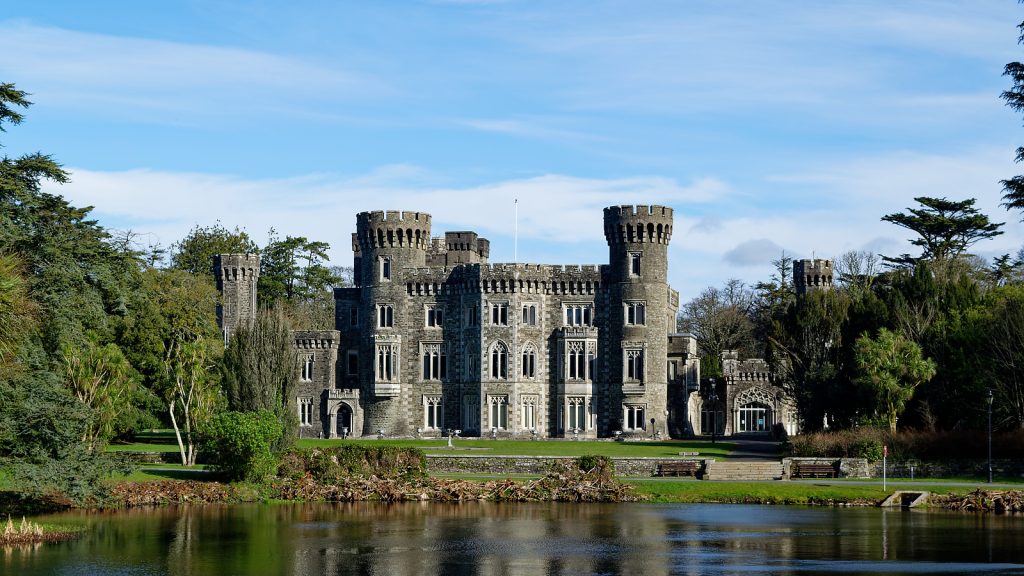
Originally owned by the Esmonde family, a Norman family who settled in the county in the 12th century, Johnstown Castle came under the possession of John Grogan in 1692. The castle underwent significant modifications and changes throughout its history, with a Victorian revival style rebuild in the 19th century. After being owned by the Grogan-Morgan family for centuries, the castle was presented as a gift to the Irish Nation in 1945.
Details about Johnstown Castle:
Location: Murrintown, Ireland
Constructed in: 19th century
Builder: Grogan-Morgan family
Architectural style: Victorian Revival style
Present use: Open to the public
Current owner: Irish Government
22. Kilcoe Castle

Kilcoe Castle, situated on an islet in Roaringwater Bay, near the village of Ballydehob in County Cork, Ireland, was built in the mid-15th century by the Clan of Dermod MacCarthy. After being besieged in 1600, the castle gradually fell into disrepair and ruin. However, in 1998, the ruin of Kilcoe Castle was purchased and restored by actor Jeremy Irons, becoming his family’s private home to this day.
Details about Kilcoe Castle:
Location: Ballydehob, Ireland
Constructed in: 15th century
Builder: Clan of Dermod MacCarthy
Architectural style: –
Present use: Private property
Current owner: Private owner
23. Kilkenny Castle

Also known as the Castle of Butlers, Kilkenny Castle was built between 1195 and 1213, shortly after the Norman conquest of Ireland. In 1967, the property was transferred to the people of Kilkenny and opened to the public, maintained by the Office of Public Works.
Details about Kilkenny Castle:
Location: Kilkenny, Ireland
Constructed between: 1195 and 1213
Builder: Unknown
Architectural style: Victorian architecture
Present use: Open to the public
Current owner: Office of Public Works
24. Knappogue Castle

Knappogue Castle, a tower house located in the parish of Quin, County Clare, Ireland, was originally constructed in 1467 by Seán Mac MacNamara. It served as the seat of the MacNamara sept, the Earls of West Clancullen. Throughout its history, the castle changed hands among various families. In the mid-19th century, it was remodeled in a Victorian revival style by architects James Pain and George Richard Pain on behalf of the Dunboyne family. Eventually, the castle was acquired by Mark Edwin Andrews, a former Assistant Secretary of the United States Navy, who, together with his wife, Lavonne, conducted extensive restoration work in collaboration with the Shannon Free Airport Development Company, now Shannon Heritage. Since then, the castle has been open to the public.
Details about Knappogue Castle:
Location: Quin, Ireland
Constructed in: 1467
Builder: Seán Mac MacNamara
Architectural style: Late Medieval architecture
Present use: Open to the public
Current owner: Shannon Heritage
25. Lough Eske Castle
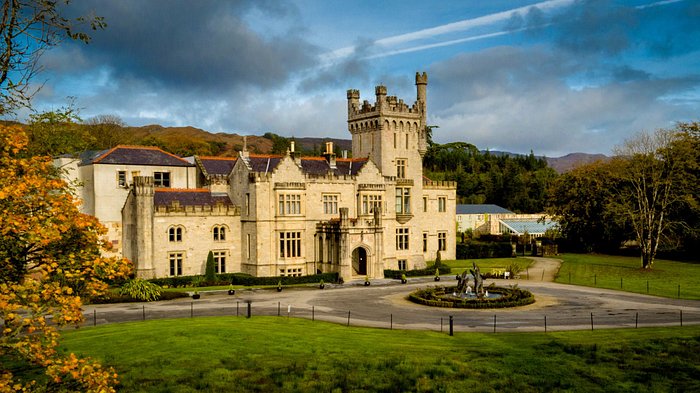
Located in Donegal town, Lough Eske Castle ranks among the top 10 hotels in Ireland. Built in 1474 and reconstructed in the mid-19th century after a fire ravaged the original structure in 1939, it has earned the World Luxury hotel award multiple times. Visitors and guests have acclaimed it as the World’s Best Luxury Country Hotel for four consecutive years.
Details about Lough Eske Castle:
Location: Donegal, Ireland
Constructed in: 1474
Builder: Unknown
Architectural style: Elizabethan Tudor architecture
Present use: 5-star luxury hotel
Current owner: Unclear
26. Malahide Castle

Malahide Castle, established by Richard Talbot in 1185, served as the ancestral home of the Talbot family for 791 years, from 1185 until 1976. With a rich history of bloodshed and sorrow, the castle is believed to be haunted by ghostly apparitions, including a court jester and a lady in white. It is said that these spirits are former residents of the castle. Presently, Malahide Castle is owned by the Irish State and is open to both local and international visitors throughout the year.
Details about Malahide Castle:
Location: Malahide, Ireland
Constructed in: 1185
Builder: Richard Talbot
Architectural style: Medieval architecture
Present use: Tourist attraction/Open to visitors
Current owner: Irish State